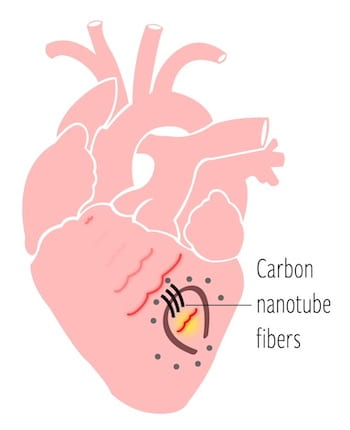Texas Heart Institute/Rice nanotube fibers move up to final 16
Here’s something to do that doesn’t require social distancing: Vote in STAT Madness!
The initiative by researchers at Texas Heart Institute (THI) and Rice University to use nanotube fibers to reconnect electrical connections in hearts has made round 3 of the national competition to choose the past year’s best university-based bioscience project.
 The competition, an NCAA-style, single-elimination bracket, is down to 16 competitors from 64. Round 3 voting is open until March 19 at 10:59 p.m.
The competition, an NCAA-style, single-elimination bracket, is down to 16 competitors from 64. Round 3 voting is open until March 19 at 10:59 p.m.
The researchers revealed last August that the fibers can be used to bridge electrical gaps in heart tissue damaged by cardiac arrest. The team was co-led by Dr. Mehdi Razavi of THI and Matteo Pasquali, the A.J. Hartsook Professor of Chemical and Biomolecular Engineering and a professor of materials science and nanoengineering and of chemistry at Rice.
The American Heart Association helped fund the research with a 2015 grant. The team’s paper was chosen as an open-access Editor’s Pick in the American Heart Association journal Circulation: Arrhythmia and Electrophysiology.
The research springs from the pioneering 2013 invention by Pasquali’s lab of a method to make conductive fibers out of carbon nanotubes. The fibers are also being studied for electrical interfaces with the brain for use in cochlear implants, as flexible antennas and for automotive and aerospace applications.
STAT, an online publication associated with the Boston Globe focused on health and medicine, began the competition in 2017 to celebrate biomedical science and remind readers that “tackling disease starts with small advances, often supported with federal funding,” according to a preview of this year’s event.
Two winners will be chosen: a “fan favorite” based on votes by the public, and an editor’s pick chosen by STAT journalists. The winners will be announced April 6.

